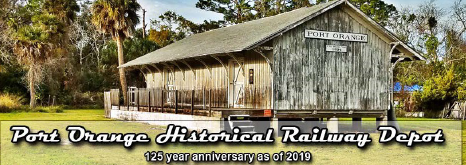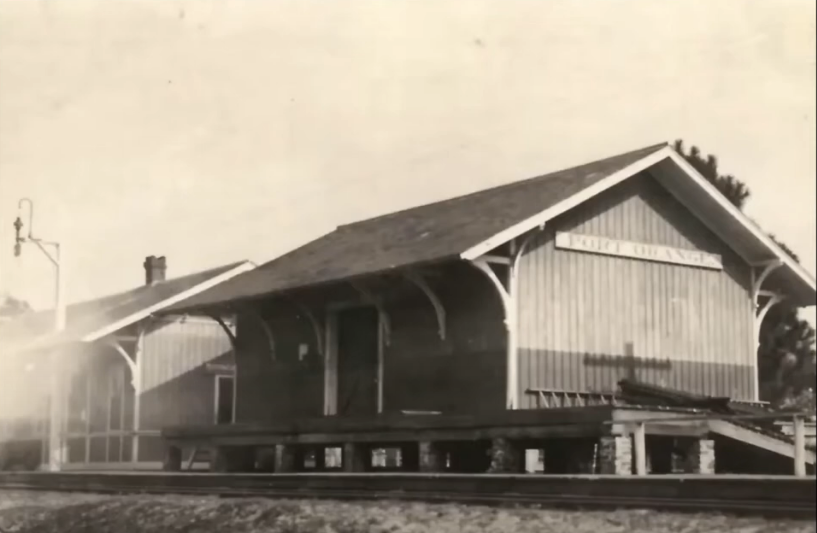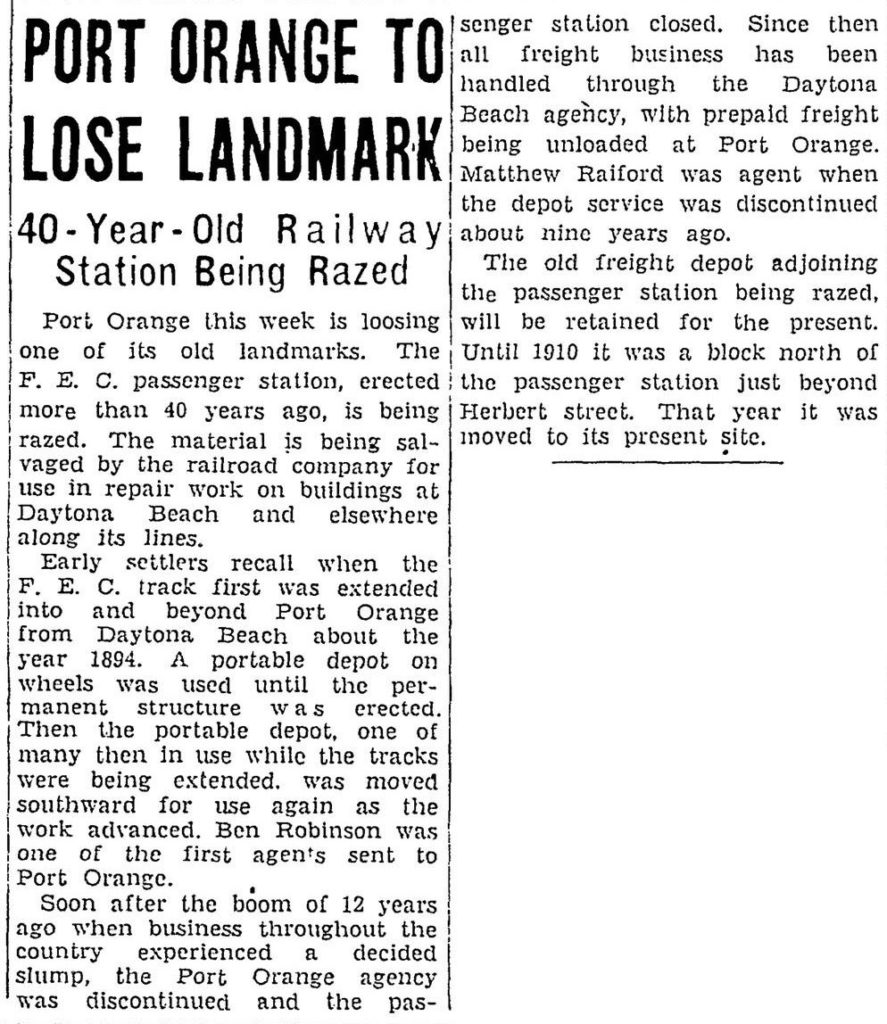
In 1886, the St. Johns and Halifax Railway was expanded from the St. Johns River to Daytona. This was a narrow gauge (3′) railway. Henry Flagler took control of the Railway and in 1892, extended the line to Port Orange as part of the southern expansion to Miami. Flagler adopted standard gauge track.
The first station was a portable depot on wheels. There are no existing pictures of this depot. It was probably a modified Railway Post Office car or caboose. This depot was later re-used further south during the construction of the railroad.

What we affectionately call “Our Little Depot” was built in 1894. It is the oldest surviving Florida East Coast Railway (FEC) Depot. It would later become FEC building #245. It was located south of Dunlawton Avenue and east of the tracks. A separate freight house was built in the same year. It was located just north of Herbert Street and east of the tracks. The freight house was designated FEC building # 246. In 1911, the freight house was moved
just south of the original passenger depot.

Passenger service reached its peak in 1926 with the completion of the double-track main line and the block signal system. Increased competition, hurricane damage, and the Great Depression all caused service to decline. The FEC went into bankruptcy in 1931. A year later regular passenger service to Port Orange ended and it became a flag stop.

In 1938, instead of razing the passenger depot the two buildings were modified into a freight-only depot. We believe since these depot’s were built locally with locally sourced wood, that the board & battens were different sizes and could not be used to repair other depots. The combined structure was designated building #245. It would take thirty years for the FEC to emerge from bankruptcy.
In 1963, the longest strike in railroad history began. All passenger service on the FEC was stopped. Seventy years of service on the railroad ended when the City purchased the Depot in 1964. Two years later, the Depot was sold and moved to 415 Herbert St, its present location. In 1998, it was placed on the National Register of Historic Places. The City again purchased the Depot in 2015. Four years later, the Port Orange Railway Society was formed to help the City restore the Depot and preserve all of its history.
Today the Depot starts a new chapter in its history as part of the Port Orange Railway Experience.